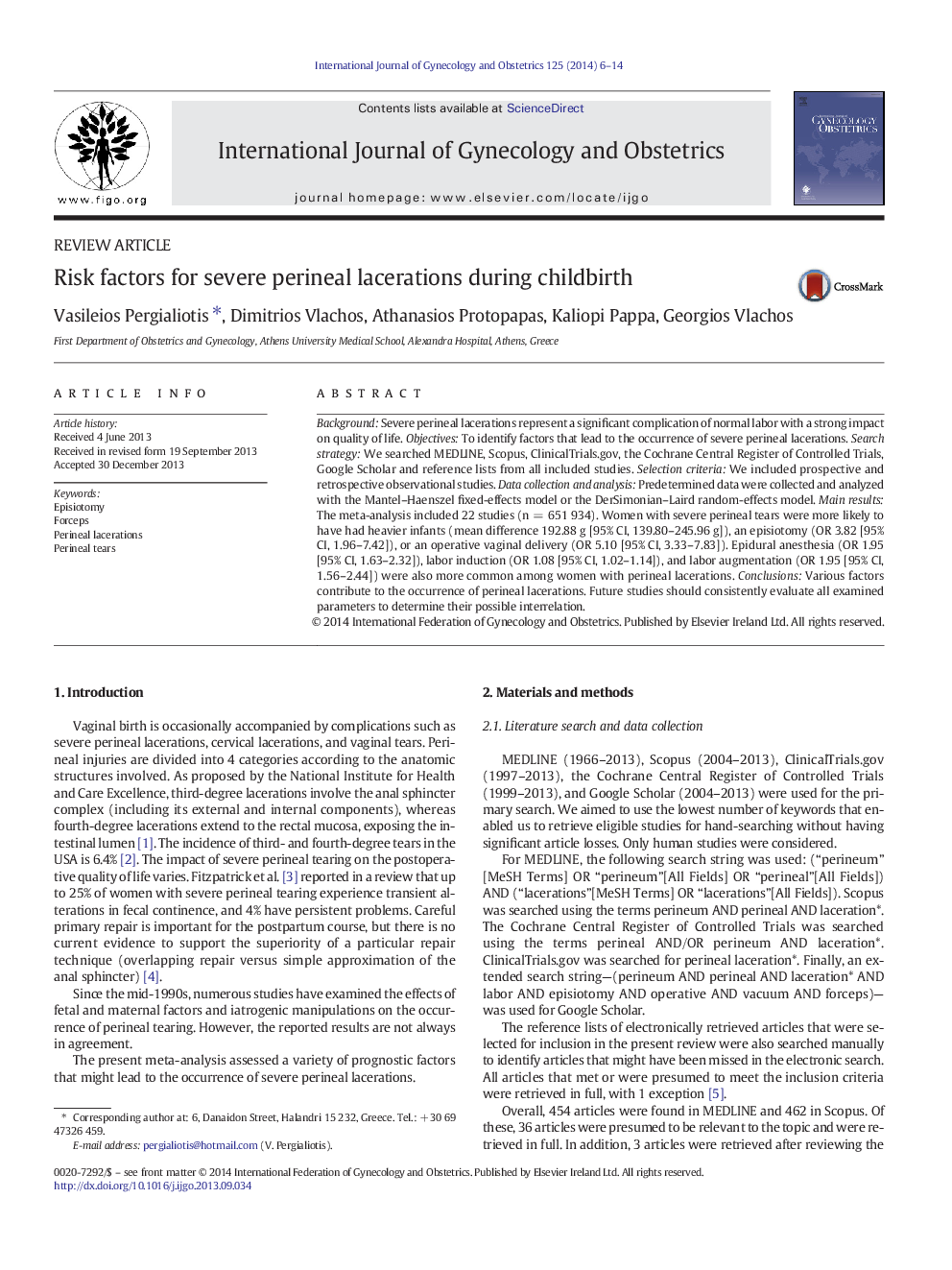| Article ID | Journal | Published Year | Pages | File Type |
|---|---|---|---|---|
| 3948643 | International Journal of Gynecology & Obstetrics | 2014 | 9 Pages |
BackgroundSevere perineal lacerations represent a significant complication of normal labor with a strong impact on quality of life.ObjectivesTo identify factors that lead to the occurrence of severe perineal lacerations.Search strategyWe searched MEDLINE, Scopus, ClinicalTrials.gov, the Cochrane Central Register of Controlled Trials, Google Scholar and reference lists from all included studies.Selection criteriaWe included prospective and retrospective observational studies.Data collection and analysisPredetermined data were collected and analyzed with the Mantel–Haenszel fixed-effects model or the DerSimonian–Laird random-effects model.Main resultsThe meta-analysis included 22 studies (n = 651 934). Women with severe perineal tears were more likely to have had heavier infants (mean difference 192.88 g [95% CI, 139.80–245.96 g]), an episiotomy (OR 3.82 [95% CI, 1.96–7.42]), or an operative vaginal delivery (OR 5.10 [95% CI, 3.33–7.83]). Epidural anesthesia (OR 1.95 [95% CI, 1.63–2.32]), labor induction (OR 1.08 [95% CI, 1.02–1.14]), and labor augmentation (OR 1.95 [95% CI, 1.56–2.44]) were also more common among women with perineal lacerations.ConclusionsVarious factors contribute to the occurrence of perineal lacerations. Future studies should consistently evaluate all examined parameters to determine their possible interrelation.
